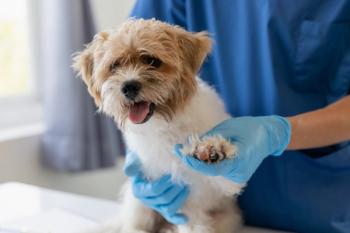
Louisiana residents return home despite warnings from officials; gridlock and storm damage awaits them
National Report -- Louisiana residents returned to their powerless homes and businesses Sept. 3 despite warnings from officials.
National Report
-- Louisiana residents returned to their powerless homes and businesses Sept. 3 despite warnings from officials.
AFP Photo/Jim Watson
Water splashes over the side of a levee on the Industrial Canal in New Orleans Sept. 1 as Category 2 Hurricane Gustav plowed into the Gulf Coast
New Orleans Mayor Ray Nagin had hoped non-essential workers and residents would stay clear of the fragile city, rocked by Gustav's 80-mph winds until Sept. 5, but people started to trickle back into neighboring communities Sept. 3, so Nagin opened the city gates with warnings to residents.
"They just made sure everyone knew to realize what you're coming back to," says Dr. Gary Levy, who owns a practice to the east of the city and had to rebuild after Hurricane Katrina.
Levy returned home Sept. 3 and says he was happy to find the only damage was some downed branches and no electricity. He took his perishable supplies with him in an ice chest to a hotel in Alexandria, La., where he had made reservations a week before Gustav hit.
For those who suffered worse damage in the storm, though, the Federal Emergency Management Agency (FEMA) officially declared many areas in Louisiana a disaster, clearing the way for the release of funds to rebuild and repair.
Additionally, Levy says an announcement was made to the public today that FEMA will reimburse evacuees for their lodging costs. The announcement could be a response to afear by many that some won't heed evacuation warnings in the future since Gustav turned out to not cause as much damage as originally was expected.
"It was an incredibly successful evacuation process," Levy says, adding he doesn't think future warnings will be ignored. "I don't think anybody with any degree of sense would think [to stay]."
The evacuation was so well planned, Levy says he didn't even have any suggestions to make for the next time around. People have learned since Katrina, he says, adding his office was flooded with patients in the days before the storm.
"Everyone learned from Katrina that you better have proof of vaccinations if you want to board your pet," Levy says. adding he vaccinated about 300 pets in the three days before the storm and dispensed a lot of tranquilizers for during the storm.
Levy planned to reopen his practice Sept. 5 with the help of a generator for power, but says he's hoping for a quiet day.
Traffic congestion coming into the city and power outages seemed to be the biggest problems remaining almost a week after a mandatory evacuation was ordered in many parts of Louisiana, and Levy says all the main levees held through the storm, though people were concerned they might not be up to par following the destruction caused by Hurricane Katrina.
During the storm, state offices were closed, curfews were put into effect and roads were closed to avoid the problems faced in 2005. FEMA began damage assessments Sept. 2 after Gustav moved inland.
Elsewhere along the Gulf of Mexico, Alabama leaders issued a mandatory evacuation in preparation for Gustav Aug. 31, but the order was lifted early Sept. 1 and state shelters were open for any evacuees but were allowing residents to return home.
In Texas, about 280,000 people self-evacuated and another 8,500 remained in shelters Sept. 1, according to the governor's office.
Emergency units, including the Texas Animal Health Commission was activated, and flooding was expected across the state as Gustav, now downgraded to a tropical depression, moves inland.
Mississippi also mobilized emergency units over the weekend, and as of Sept. 2, still has 14,000 people in shelters and was experiencing widespread power outages and boil alerts, according to state officials.
Nearly 2 million people had evacuated the Big Easy as Gustav neared the Louisiana coastline as a Category 2 hurricane Sept. 1.
In a telephone interview with DVM Newsmagazine, Dr. Robert Gros, a New Orleans veterinarian and former president of the Louisiana Veterinary Medical Association, described the evacuation as "gridlock yet far more appealing than facing a 20-foot wall of water."
Gustav's storm surge was estimated at 10-14 feet, delivering some 6 to 12 inches of rain, according to the National Weather Service.
Just before New Orleans began its forced evacuation this weekend, client requests focused on prescribing sedatives to help pets cope with the intensity of the storm. More than a dozen clients threw in the towel and requested euthanasia for sick pets just prior to the storm, Gros adds.
"I know when it is time to leave. I have been fighting these things for 17 years. I have been through having my roof blown off my house. It certainly isn't anything to risk your life for."
Gros rode out the storm from Mississippi, but plans to return to New Orleans on Sept. 3 to treat patients and assess the impact.
Newsletter
From exam room tips to practice management insights, get trusted veterinary news delivered straight to your inbox—subscribe to dvm360.






